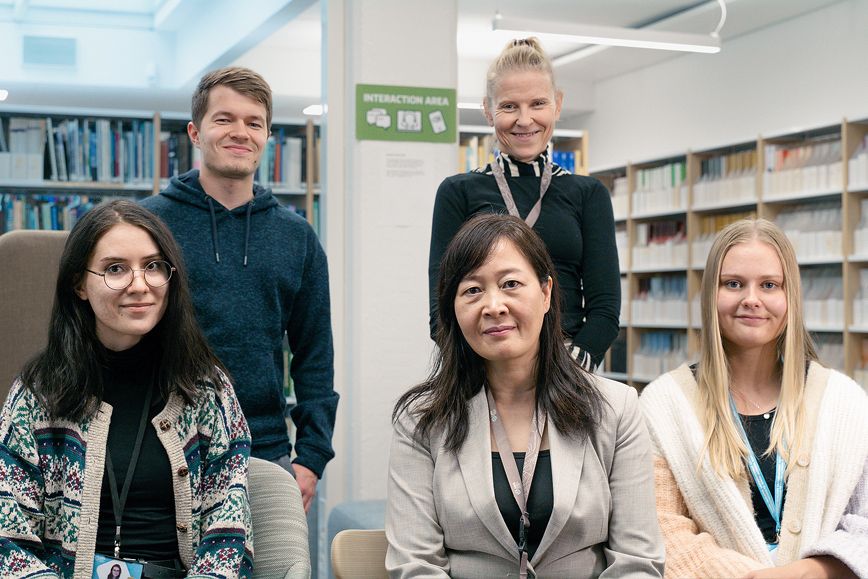The maintenance of core geospatial data is based on aerial photographs used by surveyors to assess where there are new buildings and roads, for example. Changes occurring in terrain will be imported into the system and then updated to map products, for example. The joint Advanced Technology for the National Map Updating (ATMU) project of the Finnish Geospatial Research Institute and the National Land Survey of Finland investigated whether a machine could do reliable work – study aerial photographs and laser scanning material and tell us where changes have taken place. The project is soon coming to an end. Where are we now, Project Manager Lingli Zhu?
– We are currently training the AI model and improving its performance by providing it with materials from a diverse environment. This work is being carried out in close cooperation with production experts. Their task is to assess how well AI performs, and where any problems occur, Zhu says.
The future is built on cooperation between AI and human beings
According to Lingli Zhu, the results of the project have surprised the people involved in it, as well as their international colleagues, among others.
– Before this project, people may have thought that AI technology was not yet sufficiently advanced to be used in the production of basic geospatial data. We have now seen quite amazing results showing how a machine is capable of learning. At the same time, people have become familiar with the field’s vocabulary and are learning more, Zhu says.
Well, what can the ATMU-trained AI do now? Can it reliably identify a small cottage shielded by trees in the middle of a forest, for example? Lingli Zhu points out that this is not a simple task. It is important to understand that the identification process based on remote sensing materials has been studied for decades, and no perfect solution has yet been found.
– Artificial intelligence does learn to identify objects, but limitations in data can lead to misinterpretations. The material is not perfect from the machine’s perspective; instead, it has shadows, reflections, and distortions caused by moisture and different angles, which all make the work more difficult, Zhu explains.
Forest environment poses a challenge for artificial intelligence
One of the major challenges for artificial intelligence is object recognition in forest environments with inadequate remote sensing material. However, laser scanning allows the tree crowns and other vegetation to be penetrated. Using laser scanning material can help increase the reliability of object recognition, especially in forest areas.
However, we are still a long way from AI being able to detect all terrain changes. Human interpretation continues to play an important role. Artificial intelligence can free human resources to survey objects that require human perception.
– AI will accelerate and automate object recognition and change analysis, but human interpretation will still be needed in many ways in the future as well. There will also be new needs and activities as artificial intelligence replaces traditional work done by people, says Zhu.
Problems solved in multiprofessional team
Integrating the AI model into the current production process is next on the list. Both theory and practice need to work together. The National Land Survey of Finland is currently renewing the terrain data production system. The opportunities created by the ATMU project will be considered in the planning work, as will the potential changes they bring to future mapping tools.
The ATMU project has attempted to solve problems experimentally, and the work has been demanding. It is not easy to get AI to do exactly what is best from the perspective of geospatial data production. Lingli Zhu has enjoyed this challenge:
– In this work, I’ve been able to combine my research background with my competence in map production. I understand the future needs of map production well, and I can see how this field is developing. That’s why the work is very interesting, and I’m pleased with how things have progressed so far.
The ATMU project brings together computer science professionals and geospatial data specialists. The NLS’s geospatial data specialists have trained the research team and encouraged us to go further, enthuses Zhu. Her ATMU research team employs recently graduated experts who have also written their Master theses as part of the project.
– These young experts have followed the instructions, been very cooperative and made important contributions to the work, says Zhu.
The closing seminar of the ATMU project will be held on 15 December 2022. Follow our communication and join the event!
Watch video about the project


